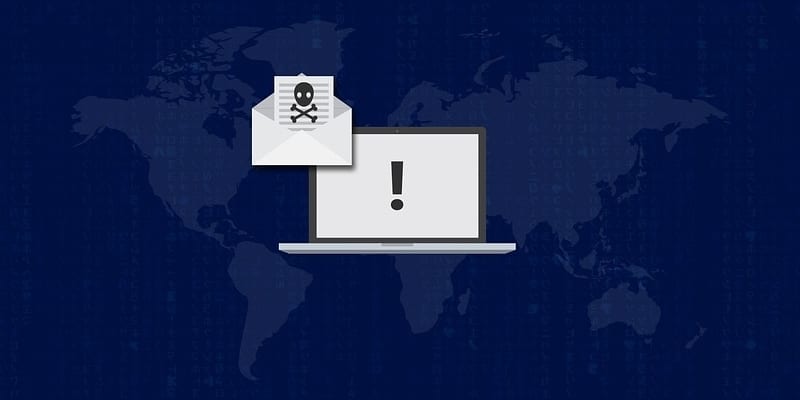The Top 5 Endpoint Security Myths For Enterprises


What are the top 5 endpoint security myths to which enterprises fall victim? What’s the reality of these myths, and what can enterprises do to strengthen their cybersecurity?
Endpoint security tends to attract all sorts of notions from enterprise decision-makers. Indeed, this may stem from endpoint security’s long-standing popularity since cybersecurity’s earliest days. However, oftentimes endpoint security myths can actually cause poor cybersecurity implementation and effectiveness.
So here’s the truth behind the endpoint security myths you (quite probably) believe:
The Top 5 Endpoint Security Myths
Myth #1: Our Legacy Antivirus Will Protect Us!
Unfortunately, enterprises’ reliance on legacy antivirus shall go down in history as one of the most destructive endpoint security myths. If we had a nickel for every time we disputed the effectiveness of antivirus, we could write it in gold.
The myth persists because enterprise simply become used to their legacy antivirus. Usually, they become so invested in their interface and processes they refuse to recognize any issues.
Rest assured, legacy antivirus solutions do create issues. In fact, legacy antivirus can create more risk than no solution at all; they just can’t match the capabilities or threat intelligence of next-generation endpoint security.
Moreover, antivirus solutions can optimally defend a few on-premises endpoints; however, it can’t protect more remote endpoints and infrastructures of modern networks. Therefore, legacy antivirus can’t keep up with the hackers.
Thus, deploying next-generation endpoint security should become one of your first steps to disrupting this myth. To do so effectively, determine your individual use case by speaking with your IT security team.
Myth #2: The More Endpoint Security We Have, The Better!
Of the common endpoint security myths, this one proves especially insidious. Enterprises tend to believe that if you integrate more solutions into your infrastructure, you can close more cybersecurity gaps.
Unfortunately, the opposite proves true more often than not. When deploying multiple solutions at once, you actually can create integration issues and thus more security gaps. Further, each agent requires its own attention and monitoring which often results in agents being lost in the shuffle and decaying.
Conversely, the more streamlined and integrated your endpoint protection platform, the more secure your digital assets. Therefore, deploying a centralized endpoint security solution can solve this problem.
After all, a next-gen solution should include all of the agents in a single bundle via centralized management. This, in turn, helps IT security teams monitor your capabilities effectively and prevent endpoint security decay preemptively.
Myth #3: We Don’t Need EDR
Yes, your enterprise absolutely needs EDR. Don’t let endpoint security myths like this one delude your cybersecurity decision-makers.
In fact, a strong digital perimeter can deter a good deal of cyberattacks. Unfortunately, they can’t protect against 100% of all malware attacks. Eventually, something will penetrate your network’s perimeter.
Myriad reasons explain why. Hackers continue to refine and evolve their digital threats. The enterprise perimeter becomes increasingly porous as businesses undergo cloud adoption and digital transformation.
Additionally, the increase of mobile devices and IoT devices can create unmonitored dark areas in your IT environment. From these concealed areas, hackers can perform island-hopping attacks, conduct lateral movements, or plant dwelling threats.
So you need EDR (endpoint detection and response) to monitor, collect, record, and store endpoint activity. In turn, your security team can use this data to detect attacks and dwelling threats. In some ways, EDR resembles the endpoint security equivalent of SIEM solutions. It even provides a centralized incident response interface for easy alert investigation and supplements it with threat detection and contextualization.
Myth #4: We Don’t Need Endpoint Security in the Cloud
Not only is this not true, but it’s also actually the outright opposite of true.
Endpoints serve as the gateways to your network; through them, users enact your business processes and hackers perform their malicious activities. Each device forms a new node in your digital perimeter, even in the cloud.
So you need to ensure hackers can’t exploit your endpoint security to subvert your cloud infrastructures.
Myth #5: Do We Even Need to Do Patches and Upgrades?
One of the most persistent but least explored endpoint security myths, the necessity of patches often eludes enterprises. Yet make no mistake, they are essential!
You should always upgrade and patch your solutions as soon as they become available. This should guide all of your internal cybersecurity policies, whether concerned with endpoint security or otherwise.
Every solution patch or upgrade contains valuable threat intelligence and remediation capabilities. Without investing the necessary time and resources into installing these patches, your enterprise leaves itself vulnerable to new security vulnerabilities.
Moreover, upgrades help keep your enterprise security relevant to evolving digital threats. Hackers do not let their weapons rust or stagnant. Instead, they sharpened and refine them to better inflict damage to your business.
Thus, you should upgrade the security firmware on your physical endpoints along with your solutions. Firmware updates contain similar security updates, and only by the two working in tandem can you feel secure in your digital perimeter.
How to Stop Endpoint Security Myths
To combat myths, you need facts. You can get them through our Endpoint Security Buyer’s Guide! We cover the top vendors in the field and their key capabilities.




















